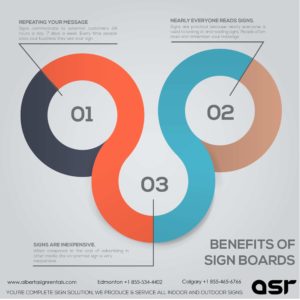Effective business signage serves as the silent ambassador of your brand, conveying crucial information at a glance. It’s not just about visibility; it’s about clarity and impact. A well-designed sign can guide potential customers into your establishment, while a poorly conceived one can lead to confusion or indifference. Understanding the psychology behind sign design is key; colours, fonts, and placement all play significant roles in how your message is received.
Signage should also reflect your brand identity consistently. When customers encounter your signs, they should instantly recognize your brand’s tone and values. This consistency builds trust and familiarity, encouraging customer loyalty. Additionally, consider the environment where your signage will be displayed—natural lighting, surrounding architecture, and foot traffic patterns can all affect visibility and effectiveness. By prioritizing these elements, you can create signage that not only attracts attention but also resonates with your audience.
Ignoring Brand Consistency Across Signs
When designing business signs, neglecting brand consistency can significantly dilute your message and confuse potential customers. Each sign serves as a touchpoint that reinforces your brand identity; inconsistency in colours, fonts, or logos can lead to a disjointed perception. Imagine walking past a store where the outdoor signage features one logo, but the interior signs showcase another—this inconsistency can create doubt about the legitimacy of your business.
Moreover, maintaining a uniform visual language across all signage not only strengthens brand recognition but also enhances customer trust. Consumers are more likely to engage with brands they perceive as cohesive and professional. A well-executed signage strategy that aligns with your overall branding can foster familiarity and loyalty, making it essential to carefully consider how each sign contributes to the broader narrative of your business. By prioritizing brand consistency, you position your business for lasting impact and recognition in a competitive marketplace.
Overcomplicating the Design with Too Much Detail
When designing business signs, it’s easy to get carried away with intricate details and embellishments. However, overcomplicating your design can dilute your message and confuse your audience. A sign should communicate quickly and effectively; too much detail can lead to visual clutter, making it difficult for potential customers to grasp the core message at a glance. Remember, a busy sign may not only turn away viewers but also undermine the professionalism of your brand.
Simplicity often leads to greater impact. Focus on clear typography, a limited colour palette, and essential imagery that reflects your business identity. This approach not only enhances readability from a distance but also ensures that your sign stands out in a crowded space. By stripping away unnecessary elements, you allow your key message to shine, creating a memorable experience for those who encounter it. Ultimately, a well-designed sign should be a beacon of clarity rather than a maze of information.
Choosing Poor Font Choices for Readability
Font choice significantly impacts the readability of your business signs, and poor selections can create unnecessary barriers for your audience. Using overly decorative or complex fonts might seem appealing, but they often hinder quick comprehension. For instance, a script font may convey elegance, but if your customers struggle to decipher the message, it defeats its purpose. Stick with sans-serif fonts for clarity, particularly at a distance or in low-light situations.
Moreover, consider the size and weight of the font in relation to the sign’s dimensions and viewing distance. A font that is too thin may disappear against a busy background, while overly bold fonts can overwhelm the message. It’s essential to test your signage by standing at various distances and ensuring that the text remains legible. Remember, your goal is to communicate effectively; if your audience can’t read your sign within seconds, you risk losing potential customers.
Neglecting Proper Placement and Visibility
Proper placement and visibility are critical components in the effectiveness of business signage. One common mistake is overlooking the location where signs are displayed. Signs should be strategically positioned to capture the attention of both foot traffic and vehicular passersby. If a sign is placed too high, too low, or obstructed by trees or other structures, it risks going unnoticed, rendering its purpose moot.
Moreover, visibility extends beyond mere location; it encompasses factors such as lighting and surrounding distractions. Signs that blend into their environment or lack adequate illumination may fail to communicate essential information, especially during evening hours. Additionally, consider the viewing distance – signs need to be legible from afar, prompting a careful selection of font size and design elements. By prioritizing proper placement and ensuring maximum visibility, businesses can significantly enhance their signage’s impact and draw in more customers.
Failing to Consider Target Audience Preferences
One of the most critical missteps in designing business signs is neglecting the preferences and needs of your target audience. A sign that resonates with your demographic can significantly enhance brand perception and customer engagement. For instance, a vibrant and playful design might attract younger audiences, while a more subdued and professional approach may appeal to corporate clients. Understanding these nuances can be the difference between drawing customers in or turning them away.
Cultural considerations play a vital role in how your message is perceived. Colours, symbols, and even fonts can carry different meanings across various communities. Failing to account for these factors not only risks alienating potential customers but can also lead to misunderstandings about your brand’s values. By conducting thorough research and perhaps even soliciting feedback from your target audience during the design process, you can create signage that speaks directly to their preferences, ultimately driving foot traffic and increasing brand loyalty.
Key Takeaways for Successful Signage
Effective signage plays a crucial role in conveying your brand’s message clearly and attractively. One key takeaway is the importance of legibility; your sign should be easily readable from a distance. This means choosing appropriate font sizes, styles, and colours that contrast well with the background. Remember, a potential customer should grasp your message within seconds.
Another essential aspect is consistency in branding. Your signage should reflect your brand’s identity and values, creating a cohesive look across all platforms. This includes using consistent colours, logos, and messaging that align with your overall marketing strategy. Lastly, consider the location and placement of your signs. An ideal position maximizes visibility and foot traffic, ensuring that your signage reaches the intended audience effectively. By focusing on these elements, you can create impactful signs that enhance your business presence and drive customer engagement.
Contact us today to find out more about how we can help you with all your signage needs!




